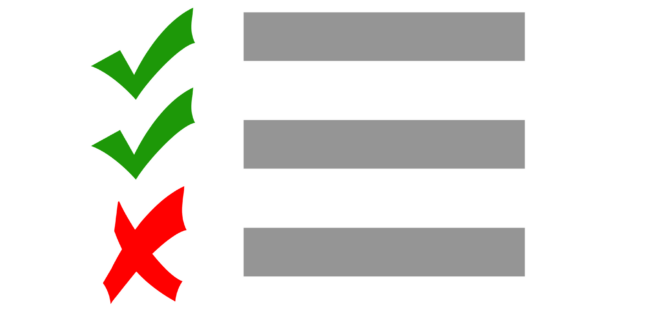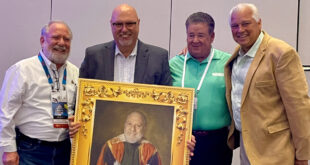
TECHNICAL CHALLENGE ANSWERS
CAN YOU MEET THE CHALLENGE?
Each issue, AFSA’s Engineering & Technical Services Department staff present technical challenges. Besides testing yourself and your co-workers, these exercises are excellent preparation for professional certification tests and may count as CEUs. Check with your certification organization. To participate, read through and work the problems.
May/June Answers
The following questions are based on NFPA 13, Standard for the Installation of Sprinkler Systems, 2022 edition; NFPA 14, Standard for the Installation of Standpipe and Hose Systems, 2019 edition; NFPA 20, Standard for the Installation of Stationary Pumps for Fire Protection, 2022 edition; and NFPA 25, 2020 edition.
1. Which of the following is defined as a vessel that can store air under pressure that is higher than the air pressure in a system? Reference: NFPA 13, Section 3.3.2 Air Receiver. A chamber, compatible with an air compressor, that can store air under pressure that is higher in pressure than that in the dry pipe or preaction system piping. (AUT-SSI)
A. Air chamber
B. Air receiver
C. Air maintenance device
D. Air reservoir
2. For a diesel engine driver in a fire pump system, how many seconds must the air supply be sized to provide continuous cranking without recharging? Reference: NFPA 20, Section 11.2.7.4.4.2 Where used as the only or primary cranking system, the air supply container shall be sized for 180 seconds of continuous cranking without recharging.
A. 60 seconds
B. 90 seconds
C. 120 seconds
D. 180 seconds
3. What is the maximum water delivery time to the most remote hose connection for an automatic dry standpipe with a capacity of 1,000 gallons? Reference: NFPA 14, Section 5.2.1.2.2 Piping volume shall be permitted to exceed the requirements of 5.2.1.2.1 where the system design is such that water is delivered to the system at the most remote hose connection in not more than 3 minutes, starting at the normal air pressure on the system and at the time of fully opened hose connection.
A. 1 minute
B. 1 minute, 30 seconds
C. 2 minutes
D. 3 minutes
4. Dry sprinkler systems are required to be equipped with what device that activates 5 psi above the system air pressure? Reference: NFPA 13, Section 8.2.6.7.2.2 The high pressure signal shall be set at 5 psi (0.3 bar) above the system air pressure specified in 8.2.6.7.1.
A. Low-pressure switch
B. High-pressure switch
C. Pressure relief valve
D. Automatic air vent
5. When performing a periodic air leakage test on a preaction system, if the normal system pressure is locked in with the air source shut off, how long does the system have to maintain pressure before the low air alarm initiates? Reference: NFPA 25 Section 13.4.3.2.6 Preaction systems shall be tested once every 3 years for air leakage, using one of the following test methods:
(1) Perform a pressure test at 40 psi (3.2 bar) for 2 hours. The system shall be permitted to lose up to 3 psi (0.2 bar) during the duration of the test. Air leaks shall be addressed if the system loses more than 3 psi (0.2 bar) during this test.
(2) With the system at normal system pressure, shut off the air source (compressor or shop air) for 4 hours. If the low air pressure alarm goes off within this period, the air leaks shall be addressed.
A. 1 hour
B. 2 hours
C. 4 hours
D. 24 hours
July/August Answers
The following questions are based on NFPA 13, 2019 edition. (Hint: The 2022 edition of NFPA 13 removed all of the extracted text from the Special Occupancy Requirements chapter).
1. What is the required occupancy classification for the protection of paint spray booths that are not used for spray application of styrene cross-link thermoset resin or for powder coating operations? Reference: NFPA 33, Section 26.4.1.2(3)).
26.4.1.2 The automatic sprinkler system shall be designed as follows:
(1) For spray application of styrene cross-link thermoset resin application areas, sprinklers shall be designed for Ordinary Hazard (Group 2) as defined in this standard.
(2) For powder coating operations, sprinklers shall be designed for Ordinary Hazard (Group 2), as defined in this standard.
(3) For all other spray areas, sprinklers shall be designed for Extra Hazard (Group 2) as defined in this standard.
A. Ordinary hazard (Group 1)|
B. Ordinary hazard (Group 2)
C. Extra hazard (Group 1)
D. Extra hazard (Group 2)
2. When protecting the underside of piers or wharves, what other type of sprinkler is permitted to be used in addition to pendent sprinklers in the upright position? Reference: NFPA 307 Section 26.22.2.1.2(B) The following design and installation guides shall apply where pendent sprinklers in the upright position or old-style sprinklers are to be utilized.
A. Pendent sprinklers in the pendent position
B. Old-style sprinklers
C. Sidewall sprinklers
D. Open nozzles
3. When protecting information technology equipment, which of the following installation configurations are required? Reference: 26.14.2.2 Sprinkler systems protecting ITE areas shall be valved separately from other sprinkler systems. [75:9.1.3].
A. All rooms must be valved separately
B. All rooms must be provided with an individual floor control assembly
C. All rooms must be protected with a single interlock preaction system
D. All rooms must be protected with a double interlock preaction system
4. What is the required occupancy classification for Class A and B laboratories using chemicals? Reference: NFPA 45 Section 26.8.1(1) Automatic sprinkler system protection for Class A and Class B laboratories shall be in accordance with this standard for ordinary hazard (Group 2) occupancies. [45:6.1.1.1(1)].
A. Ordinary hazard (Group 1)
B. Ordinary hazard (Group 2)
C. Extra hazard (Group 1)
D. Extra hazard (Group 2)
5. What is the minimum required density and remote area for sprinkler systems protecting stationary combustion engines and gas turbines? Reference: NFPA 37 Section 26.6.1* Design Requirements. Automatic sprinkler systems shall be designed to provide for a density of 0.3 gpm/ft2 (12.2 mm/min) over the most remote 2500 ft2 (230 m2). [37:11.4.5.1]
A. 0.2 gpm/ft2 over 2000 ft2
B. 0.3 gpm/ft2 over 2000 ft2
C. 0.3 gpm/ft2 over 2500 ft2
D. 0.4 gpm/ft2 over 2500 ft2

 Sprinkler Age A Publication of the American Fire Sprinkler Association
Sprinkler Age A Publication of the American Fire Sprinkler Association
